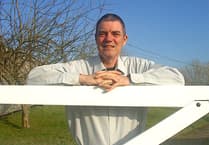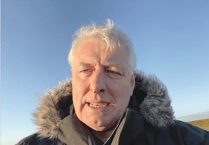As I type, it is the summer solstice, the longest hours of daylight for the year. I am pictured measuring the circumference of the Earth using a shadow and a stick, an experiment that only works during the solstice, and was first carried out by the Greek mathematician Eratosthenes circa 200 BC.
In contrast, July sees the start of the downhill slide to winter. By the end of the month, the sun sets at around 9pm - about 40 minutes earlier than in June.
The sun is still pretty active - one consequence of this is that the magnetic pole of the sun is about to flip! This occurs about every 11 years around the solar maximum. Of course, the short nights reduce the opportunity to see the aurora.
The phases of the moon are: First Quarter, July 2; Full Moon July 10; Last Quarter, July 18; New Moon, July 24. This month’s full moon is called the Buck Moon, because male deer are beginning to grow their new antlers.
Mercury is brightest and best in the evening sky on July 4. Venus is bright in the morning sky, in the constellation of Taurus, and look out for Mars in the evening sky in Leo - close to Regulus, its brightest star.
Noctilucent or night-shining clouds may be visible this month - look north around midnight. The sun is below the horizon, but not by much. It illuminates the dust particles in the upper atmosphere, often shining like cirrus clouds but brighter - more often seen these, due some say, to the presence of rocket dust.
The Perseids, the most reliable meteor shower of the year, should start to become visible after mid-July before peaking in August.
Brian Sheen runs the Roseland Observatory which is based in Truro High School for Girls. Find it online at www.roselandobservatory.co.uk





Comments
This article has no comments yet. Be the first to leave a comment.